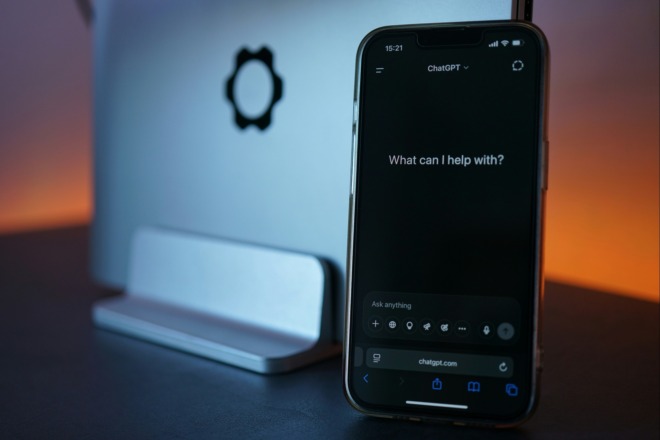Staying ahead in the digital world means adapting to new audience preferences. One powerful way to achieve this is through dynamic content. This is a marketing technique that allows you to tailor your messages to users’ interests.
As a marketer, dynamic content can be the key to improve engagement. Consider exploring dynamic content, so you can use it to elevate your marketing.
What Is Dynamic Content?
Dynamic content involves creating personalized content based on user data. Marketers that leverage it can ensure they make more engaging articles or videos. That way, they create a better user experience.
Dynamic content is important for several reasons. For one, you’re creating personalized content. The use of personalization shows that your brand cares and is understanding. In turn, this results in more meaningful experiences and increases their trust.
Using this marketing method also increases relevance. In a world where companies bombard users with information, dynamic content wins. That’s because your content stays relevant. Thus, you can improve your brand perception this way.
Finally, dynamic content is highly targeted. It lets you create better campaigns geared toward your audience’s interests and behaviors. This can improve your brand perception as an outcome.
Creating Dynamic Content
Now that you know more about dynamic content, here are some ways to captivate your audience.
1. Personalize Email Campaigns
Personalized email campaigns are one way to present dynamic content. They can boost engagement, develop stronger connections with your audience and increase conversions. Plus, you can easily segment your subscriber list to create the most relevant content.
One key aspect of personalizing email campaigns is crafting attention-grabbing subject lines. A subject line can include the recipient’s name or references to their interests. With this tactic, you have a higher chance of increasing your opening rates than generic ones.
Another essential component is tailoring content and offers within the email body. Based on past behavior, you can create content that aligns with subscribers’ needs. These may include product recommendations, promotions or content related to their recent interactions.
Additionally, you can personalize the design and layout of your emails. This ensures a consistent and appealing visual experience for email users. This strategy uses blocks that display different images, headlines or calls to action. Yet, you have to base them on user’s preferences.
2. Customize Website Content
Website content customization can be a great way to create engaging user experiences. It’s also a powerful technique for delivering dynamic experiences that captivate users. When adapting your site’s content, you create more enjoyable browsing experiences. This will keep your visitors returning for more.
One effective approach to this is through automated personalized recommendations. With the use of data, you can suggest content that aligns with each user’s interests. This approach significantly increases conversions as they feel more relevant to each user.
Dynamic landing pages are another key part of website customization. Landing pages that adapt to users ensure you greet visitors with content that speaks to them. With this strategy, you achieve higher engagement, longer sessions and more conversions.
Yet, website content customization also goes beyond personalized content recommendations. It also involves personalizing the language, images and calls to action. That way, it creates more consistency for users of different regions and backgrounds.
3. Tailor Social Media Content
Social media content is crucial for engaging your audience and building brand awareness. However, it involves creating content that resonates with followers. That way, you can establish better connections and meaningful interactions.
One approach to creating tailored content is geo-targeting. Content like this lets you convey messages related to their culture and local events. Therefore, you would segment your audience based on their location. Then, you would share region-specific promotions, highlighting success stories or discussing regional news.
Interest-based targeting is another way to create dynamic social media content. Know your audience to create content that caters to their specific interests.
For example, suppose you have a diverse audience with varying interests. You can create separate content streams focusing on different topics. This will allow your followers to engage with relevant content.
In addition to customizing the content, you can experiment with different formats. This can including the following:
Videos
Images
Polls
Live streams
While these keep your feed fresh, they also provide opportunities to reach segments. That’s because your segments may prefer one channel over the other. In turn, you can boost engagement and create content your audience will love.
4. Create a Special Offer
When creating dynamic content, consider providing your audience with a downloadable offer. For example, suppose you have a website based on healthy eating. You could create an ebook full of healthy food recipes for users to download.
Dynamic triggers may recommend another offering if they’ve received your ebook already. This lets you create a personalized experience to meet your audience’s needs.
Additionally, the special offer may ask users to fill in their information to receive the download. You can add new form fields for other customers. That way, you can gather information that lets you understand what else to offer.
Keep in mind that you should always test and refine your offers. A/B testing can help you understand what works best. Dive into your data and gain insights to refine and improve your offers.
5. Allow More Access to Repeat Customers
You have a ton of content to provide your audience. Yet, what if you hide much of your content behind a form?
Forms are a great way to generate new leads. However, you may have customers who are filling out those forms repeatedly to gain access to your content. Consider enhancing their experience by removing this step.
You can do this by using dynamic content to recognize loyal customers. Inputting this technique allows repeat customers to bypass the form. That way, they can get immediate access to the content you provide.
You could also provide repeat customers early access to new content. This type of nurturing allows them to deepen their connection with your brand. As a result, this turns one-time customers into repeat buyers, maintaining their loyalty for life.
Tools for Implementing Dynamic Content
Make it easier to create and deliver dynamic content with this list of popular tools:
Email marketing: Mailchimp is a platform that lets you put audience segmentation and content blocks into place. You could also use HubSpot — a marketing tool with email personalization capabilities. These include contact properties and smart content.
Website personalization: Use Optimizely to A/B test content. That way, you can find out what your audience favors most. Dynamic Yield is another personalization tool. It uses AI and machine learning to deliver real-time personalized content.
Social media management: Tools like Sprout Social offer features for targeting geographical locations. They even let you schedule your content ahead of time. Another popular social media management tool is Hootsuite. It offers segmentation and targeting options.
Content management systems (CMS): WordPress is a CMS that offers dynamic content capabilities. These include things like plugins and extensions. Additionally, Adobe Experience Manager provides a platform with tools for dynamic content delivery.
These tools are helpful in streamlining the creation process. That way, you personalize the experience across various channels. They also let you maximize your marketing efforts and drive better results.
Achieve Marketing Success With the Power of Dynamic Content
For marketers, dynamic content is a game-changer. It’s an opportunity to connect with audiences and drive engagement across channels. Yet, the key to using dynamic content is getting the right tools and mastering its techniques.
Consider making it an important part of your marketing strategy. As you dive into personalization, remember that knowing your audience is paramount. Therefore, it takes continuous learning and adaptation on your part. That way, you remain relevant and establish your brand online.


